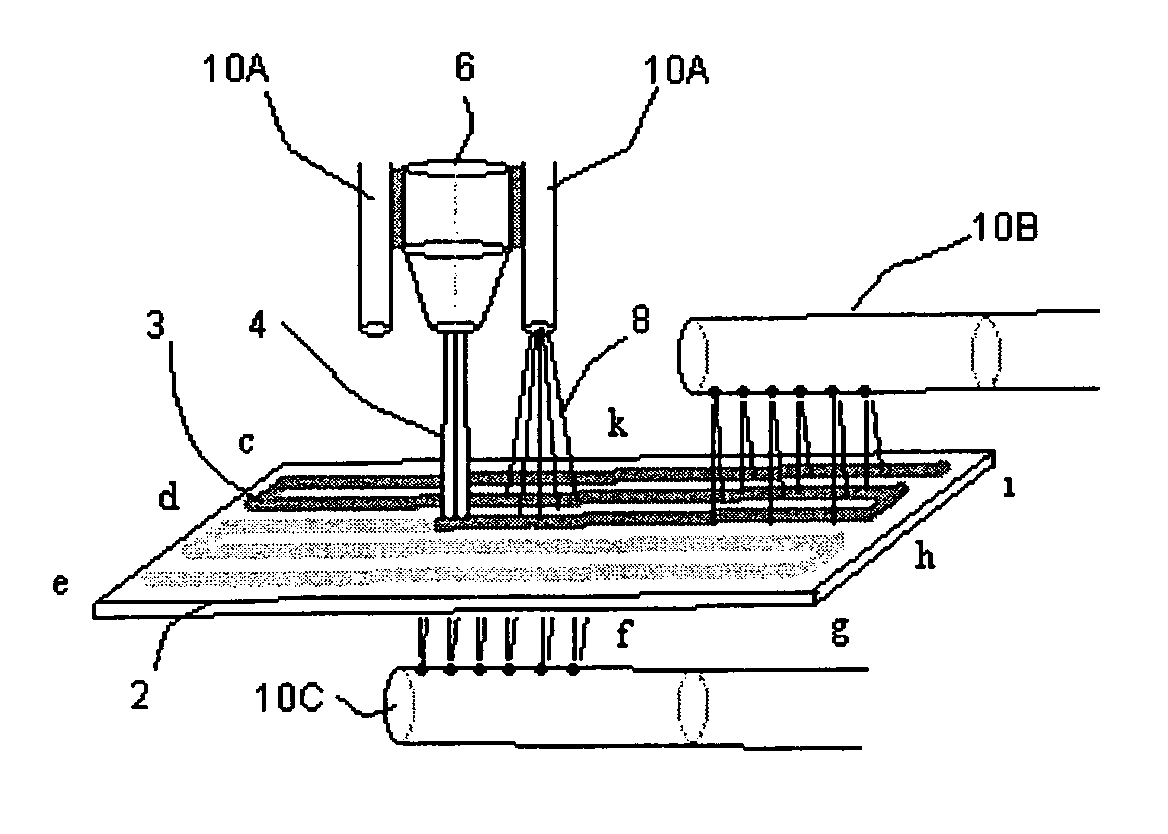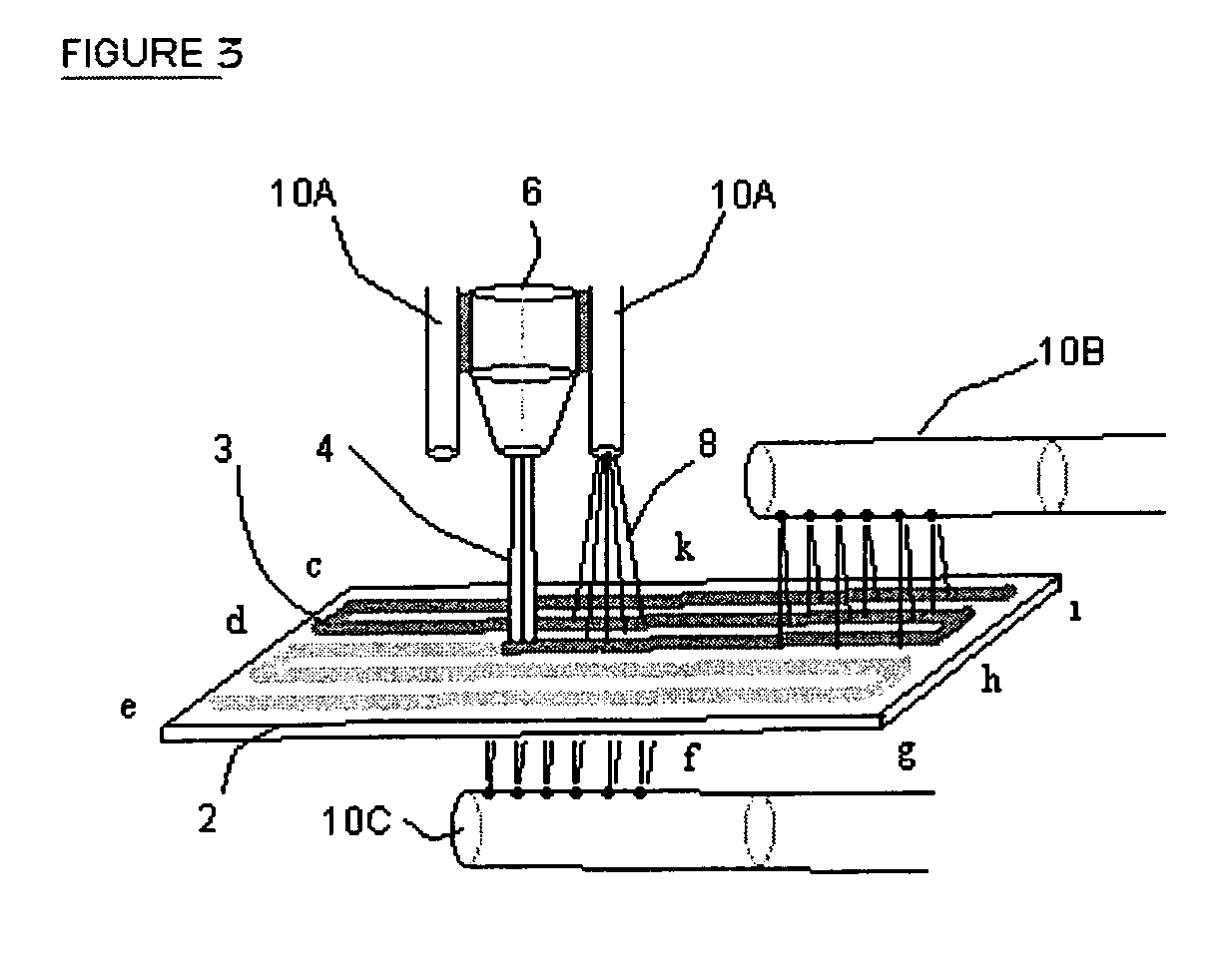Thermal deposition coating method
a coating method and coating technology, applied in chemical vapor deposition coating, plasma technique, process and machine control, etc., can solve the problems of overheating of coating and workpiece, thermal degradation, damage to thermal stress, etc., to achieve excellent coating production rate, reliable thermal measurement, and minimize damage to internal stress
- Summary
- Abstract
- Description
- Claims
- Application Information
AI Technical Summary
Benefits of technology
Problems solved by technology
Method used
Image
Examples
example 1
Cylindrical Workpiece
[0080]The purpose of this example is to more fully explain the control parameters enumerated in the description of the process steps shown in FIG. 6. FIGS. 4, 5 and 6 are used to facilitate the description.
[0081]FIG. 4 illustrates a thermal deposition process employing a workpiece 40 comprised of a workpiece substrate surface 41 which has cylindrical shape and which is rotated during the thermal deposition coating process. The workpiece (RW) comprised of workpiece substrate surface 41 is mounted in a remotely actuated, rotating holder (RWA) 42, and exposed to hot coating deposition material 46 from the thermal deposition head (TCD) 44 which, in turn, traverses over the workpiece surface by the means of a separate actuated holder (TCDA). Traversing in sync with thermal deposition head 44 is an elongated, cryogenic coolant distributor (SCMD) 48 which provides the cooling effect either to the coated only portion of the substrate 41 or to the uncoated and coated por...
example 2
[0090]FIG. 3 is a view of a thermal deposition process employing, optionally, both traversing and stationary cryogenic coolant delivery systems for the workpiece. Common pieces of equipment to those shown in FIG. 1 are similarly numbered. In showing a method for establishing cooling in the thermal deposition coating operations using a cryogenic gas coolant media, one or more coolant means 10A, 10A′, 10B and 10C provide a coolant 8. These coolant means, such as 10A, 10A′ may move with thermal deposition head 4, move as the distributor 48 shown in FIG. 4 moves, or remain stationary. Cooling the top side of the workpiece, that is the surface of the workpiece to be coated, where the heat is deposited with coating material is more desired than cooling the back side of the workpiece because of the resultant stress distribution. Of course, cooling the top side of the workpiece surface, whether the cooled portion of the surface was already coated or not, is more difficult. In one embodiment...
PUM
| Property | Measurement | Unit |
|---|---|---|
| Thickness | aaaaa | aaaaa |
| thicknesses | aaaaa | aaaaa |
| total time | aaaaa | aaaaa |
Abstract
Description
Claims
Application Information
 Login to View More
Login to View More - R&D
- Intellectual Property
- Life Sciences
- Materials
- Tech Scout
- Unparalleled Data Quality
- Higher Quality Content
- 60% Fewer Hallucinations
Browse by: Latest US Patents, China's latest patents, Technical Efficacy Thesaurus, Application Domain, Technology Topic, Popular Technical Reports.
© 2025 PatSnap. All rights reserved.Legal|Privacy policy|Modern Slavery Act Transparency Statement|Sitemap|About US| Contact US: help@patsnap.com



